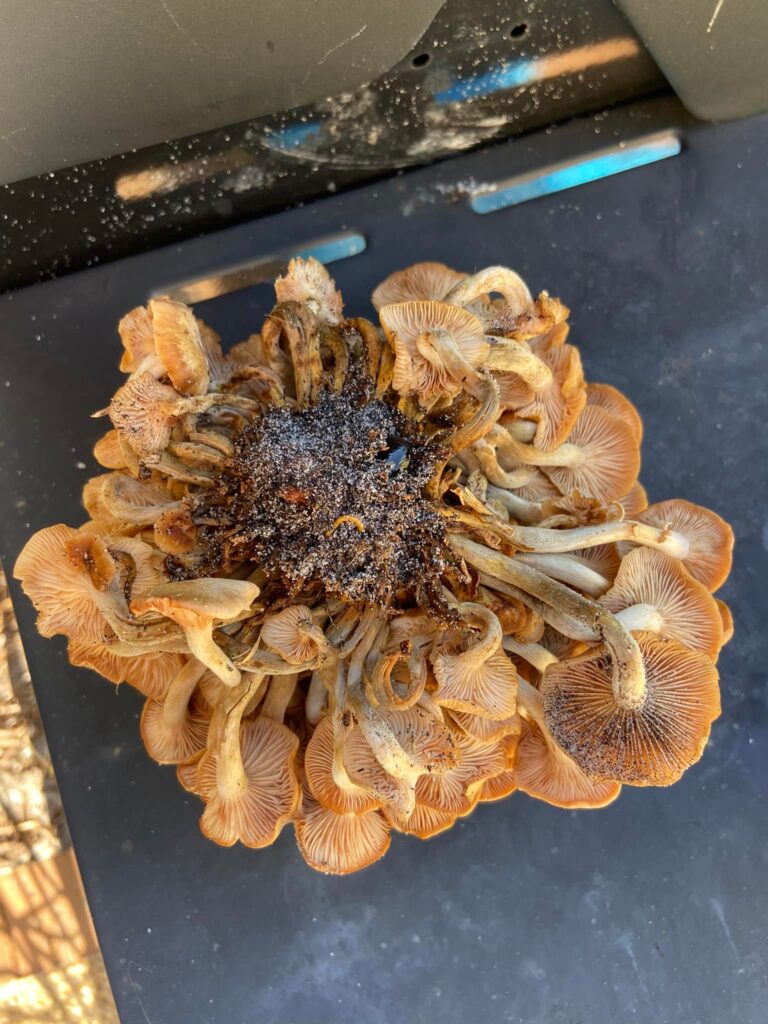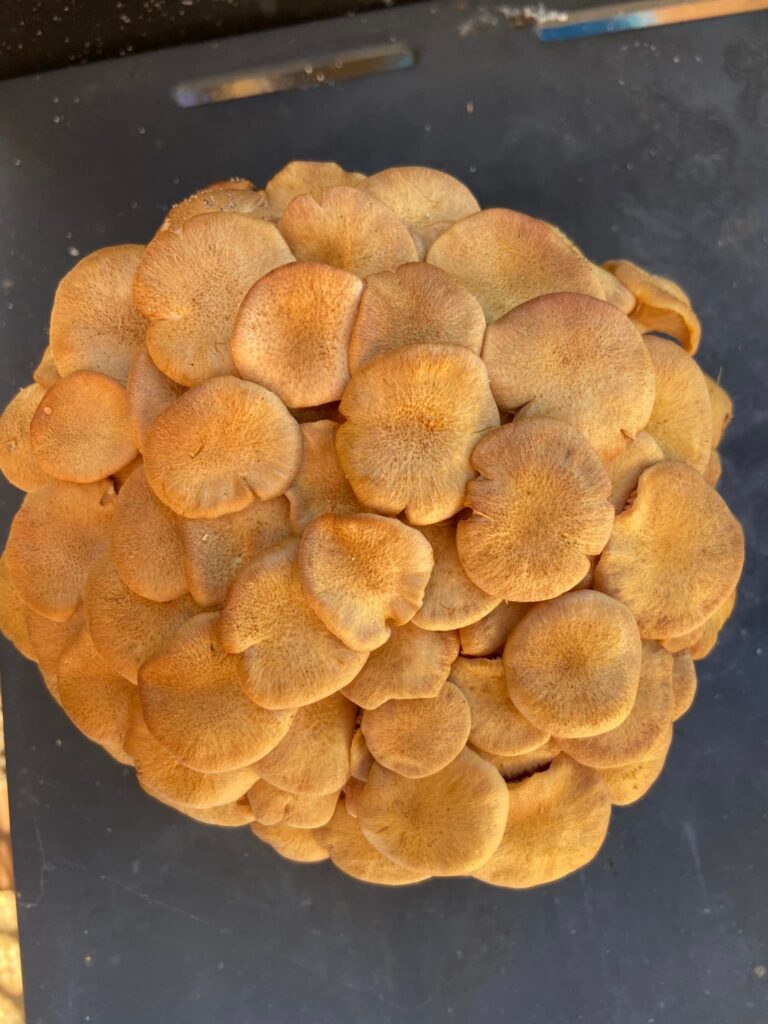The Ringless Honey Mushroom (Armillaria) is a fascinating and widespread fungi that attracts both mushroom hunters and nature enthusiasts alike. Known for its lack of a ring on the stem, this mushroom can be found in abundance, especially in late summer through fall. Though considered edible, proper identification is essential due to its resemblance to some toxic species.
Key Identification Features of Ringless Honey
The Ringless Honey Mushroom has several distinct features that help differentiate it from other mushrooms:
- Cap: The cap is typically tan to brown, with a slightly convex to flat shape, measuring between 2-6 inches in diameter. The surface may have a slightly rough, fibrous texture, especially in younger specimens.
- Gills: Its gills are creamy white, becoming slightly pink or light brown as the mushroom matures. These gills are closely spaced and attached directly to the stem.
- Stem: One of the most distinguishing characteristics is the absence of a ring (annulus) on the stem, setting it apart from other honey mushrooms. The stem is fibrous, sometimes hollow in older specimens, and usually has a slightly lighter color than the cap.
- Spores: It produces white spore prints, which can be useful for identification.
- Growth Habit: This mushroom often grows in large, dense clusters, sometimes spreading across several feet, especially near the base of dead or dying trees. It’s a parasitic fungus that thrives on hardwood trees, though it can occasionally appear on conifers.
This is a picture of Ringless honey mushroom:

Ringless honey mushroom
Habitat and Season
The Ringless Honey Mushroom is found primarily in the eastern United States, but it can also be spotted in other temperate regions. It typically grows on decaying wood, tree stumps, or at the base of living trees, particularly hardwoods like oak and maple. These mushrooms are most abundant in the fall, especially after heavy rains.
Since it’s parasitic, it can pose a problem for trees and gardens, often causing root rot or decay in affected trees. If you spot a cluster of Ringless Honey Mushrooms, it’s likely a sign that the tree they’re growing near is compromised in some way.
Edibility – Can we eat Ringless honey mushroom?
Many mushroom enthusiasts harvest Ringless Honey Mushrooms for culinary purposes. However, it’s essential to cook them thoroughly before consumption, as raw honey mushrooms can cause digestive upset. Some individuals may be sensitive even to cooked mushrooms, so caution is advised if you’re trying them for the first time.
Tip: Always forage with an expert or use multiple identification methods to avoid confusing this mushroom with toxic lookalikes.
Lookalikes
One of the critical aspects of foraging mushrooms is being aware of potential lookalikes, especially when some can be dangerous. The Ringless Honey Mushroom has a few that could cause confusion:
- Jack-o’-Lantern Mushroom (Omphalotus illudens)
One of the most notorious lookalikes, this mushroom glows faintly in the dark, thanks to bioluminescence. While visually similar, the Jack-o’-Lantern Mushroom has bright orange caps and grows in clusters like the Ringless Honey Mushroom. However, its gills run down the stem (decurrent) and are much more widely spaced. It is toxic and causes severe gastrointestinal distress if ingested. - Deadly Galerina (Galerina marginata)
Although much smaller and less likely to grow in large clusters, the Deadly Galerina can be confused with the Ringless Honey Mushroom due to its brownish color and habitat. Found growing on decaying wood, it’s extremely poisonous and contains the same deadly toxins found in Amanita species (amatoxins). Always check for a spore print; Deadly Galerina has a rusty brown spore print, while the Ringless Honey Mushroom has a white one. - Honey Mushroom (Armillaria mellea)
This relative of the Ringless Honey Mushroom has a similar appearance but with a crucial difference—the presence of a ring around the stem. Though also edible when cooked, Honey Mushrooms can cause mild gastrointestinal discomfort in some people. Its spore print is also white, and it tends to grow in similar habitats.
Harvesting Tips
If you’re foraging for Ringless Honey Mushrooms, consider these best practices:
- Timing: Late summer and early fall are prime times for finding them. Look after several days of rainfall, as they tend to pop up quickly in moist conditions.
- Location: Focus on areas near decaying wood or trees that appear weakened. Always leave some behind to allow the mushroom to continue its life cycle.
- Preparation: Since they can be tough, particularly the stems, you may want to discard the stems and focus on cooking the caps. Sautéing, stir-frying, or adding them to soups are popular ways to enjoy these mushrooms.
Conclusion
The Ringless Honey Mushroom is a delightful discovery for mushroom hunters, offering both a culinary treat and an intriguing glimpse into the world of parasitic fungi. While generally safe when cooked, its similarity to some toxic species makes careful identification a must. If you’re new to mushroom foraging, seek out an experienced guide and double-check all identification features to ensure a safe and enjoyable foraging experience.
Written by Clara Carter
Hello, I am Clara Carter, A mushroom specialist with 12+ years of experience. I love exploring Mushrooms as learning has no end. I love to share my experiences through my articles on MushroomYard.

